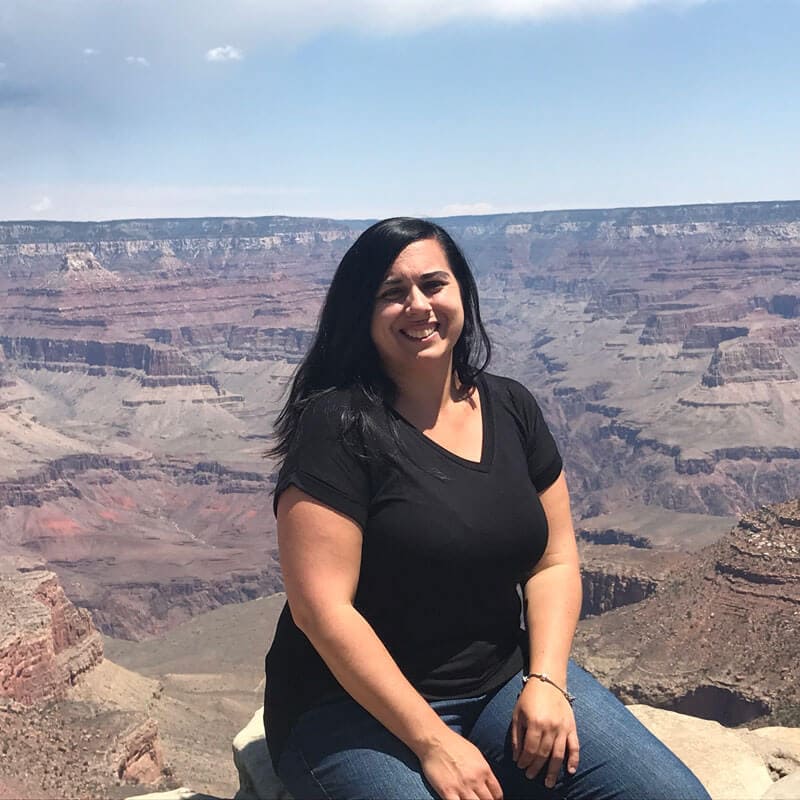What were you doing before Instructional Design?
I had been a high school teacher for 18 years. I was ready to make a change, even before the pandemic. I had come to the end of my patience, and I knew I was getting less and less effective in the classroom, so I jumped ship.
What made you decide to join Applied Instructional Design Academy (AIDA)? Did you have any hesitation about joining?
I felt that I could do a corporate training job better, but those were the only words I knew. I actually talked to an acquaintance who runs the education department for a major company, and she was using the words instructional design. So I quickly changed my job search and, and started applying for these instructional design jobs thinking, “Hey, I’ve got all this experience as a teacher, it’s going to be easy.” Crickets. I didn’t get anything. I knew I was not prepared for the field.
So when the Instructional Design Jumpstart workshop came around, I jumped, and it was perfect. It was a great program.
What was your experience like in Applied Instructional Design Academy?
I was in the November cohort. I interviewed and got hired in June, so just about seven months in. I was able to finish a couple last AIDA assignments before we officially graduated. You do have that option, just because you get a job doesn’t mean you have to leave AIDA behind.
What are you doing now?
I found a job with the state of Arizona because I needed a few more years for retirement purposes to pay into the state. That is a common question from teachers that comes up. If you haven’t retired from teaching, what happens to your retirement? There are some options out there if you need that aspect of it.
As a public school teacher, I paid into the state retirement for those years and I left, as I said, before the pandemic. It took me a few years to get back into a full-time job. So I actually looked for a state job because I knew if I work for two more years, my state pays a bonus at 20 years of experience. I want to get to that 20 years and I couldn’t do it in the classroom, so I went ahead and took the job. I’m probably at the lower end of a typical ID pay range because my state is at the bottom for everything and also because it’s a state job and the government pays less than the private sector. So I willingly made that choice for my long-term benefit.
For benefits, the vacation time and paid time off accrue your first day on the job. My job was even more flexible because I had a trip booked for the two days out of the first week that they wanted me to start, so I told them that when they made the job offer. They were like, “Okay, you’re going to start on Monday.” And I’m like, “Yeah, and then I need Tuesday and Wednesday off.” So those two days were not paid, but it didn’t affect me starting the job. I worked July and August and I just took a couple days off in September because I’d accrued those hours, so now I’m down to about two hours of time off but it’ll build back up.
I do work for the government, so they do want you to be accountable. I had worked for several years part-time and I really enjoyed having my days to just do whatever I wanted. So, this was a little bit of an adjustment going back to a nine to five. But, I asked my boss if I could possibly do four tens and have three day weekends occasionally. She said, “No, you do have to unfortunately log in.” But flexibility comes with that. They expect you to work nine hours and take an hour lunch. We just do an honor system kind of thing where you say good morning and show that you’re on the job and then log off at the end of the day.
I have one coworker whose start time is 4:30 in the morning. So he’s working his shift much more in the morning. Most people log on around seven and we have a few people that come in later in the morning. So it works for whatever you need to do. For example, for many months I was picking up my daughter at school. I would pick her up, come back, work another hour and log my eight hours for the day.
How was transitioning over 50 years old?
One question I get a lot is about any obstacles I faced transitioning over 50. Honestly, there really weren’t any. I think that’s an urban legend out there, especially for this field, because my boss is probably a few years older. Half the team that I work with is my age and several of them have been hired within the last six months. So, it’s not like I was just this old person that they brought in with all these younger kids. No, we’ve all bounced around and bring a lot of variety to the team. I think this is a great field that looks at your skills and lets a lot of that other stuff slide. So I would just say don’t worry about it.
As for tech skills, I think teachers have a pretty good foundation because most of us are familiar with Google products, we’ve built PowerPoints and built our lessons. That’s the core of instructional design – putting the pieces together to get someone from an introductory level to a more advanced level of understanding and performance. The tech is all easily accessible and there’s training time. We also get paid for worthwhile professional development and not just the newest buzzword for the year. You can pick and choose what pieces you need and where you need to strengthen your skills, and then go find training for that specific thing. My job uses Google a lot, we’ve got the whole Google suite of things.
I am one of the minority that had to learn Captivate after working with Storyline in the AIDA program, and even that was not a difficult transition. Just go into it with an open mind. You’re going to be a student again. You really do have to buy into the lifelong learning aspect of it because we’re always going to be learning something new, especially working with SMEs and realizing, “Oh, I don’t have to create all this knowledge from my own brain. I don’t have to do a lot of research.” No, it’s given to you, but you have to be a little bit quick on the uptake to interpret that with enough depth to put something together that flows well.
How has your life changed?
The best thing is the first word in Jill’s title is “freedom.” I’m a 100% remote. I can adjust things that are going on in the day. If I need a longer lunch to go take care of something, I start earlier or work a little bit later. That flexibility is wonderful, especially with being home with my family. My daughter is in high school, so I’m here when she gets home. I’m here when she leaves. I’m available if she has needs during the day. I am so thankful I found this program and found this new career.






